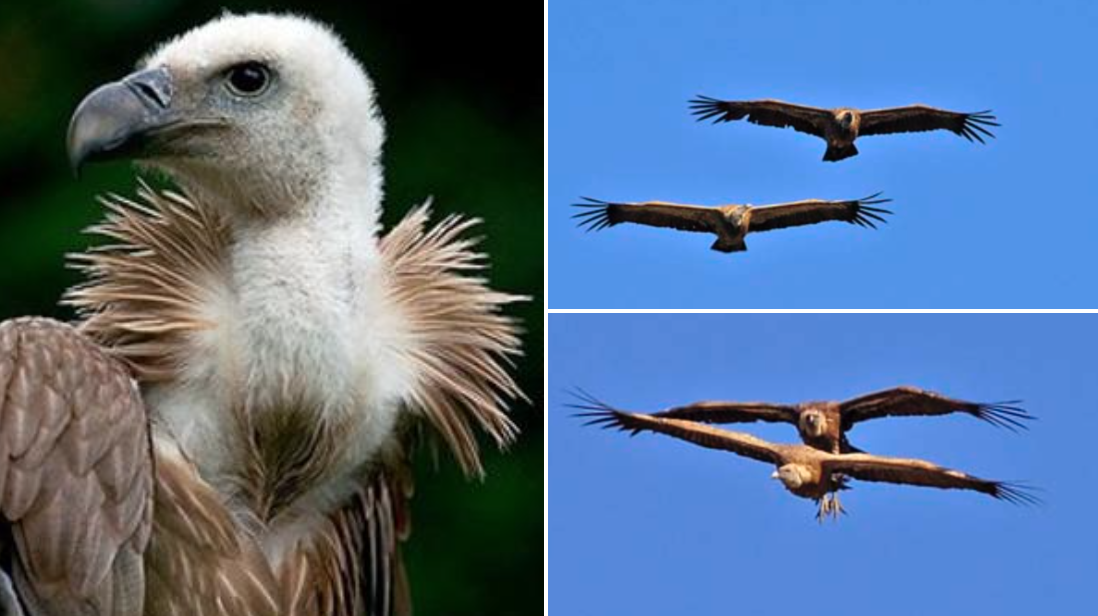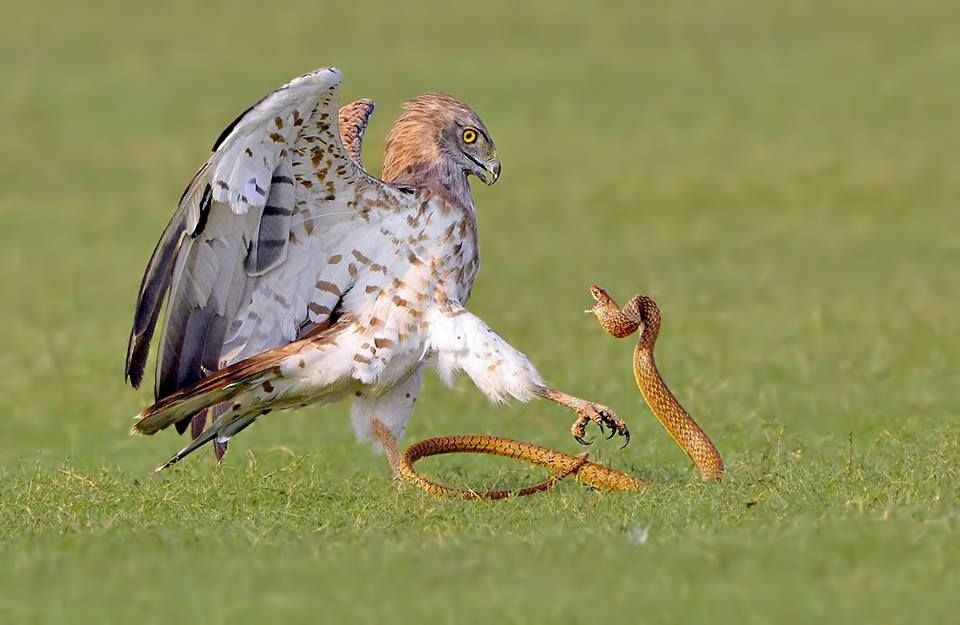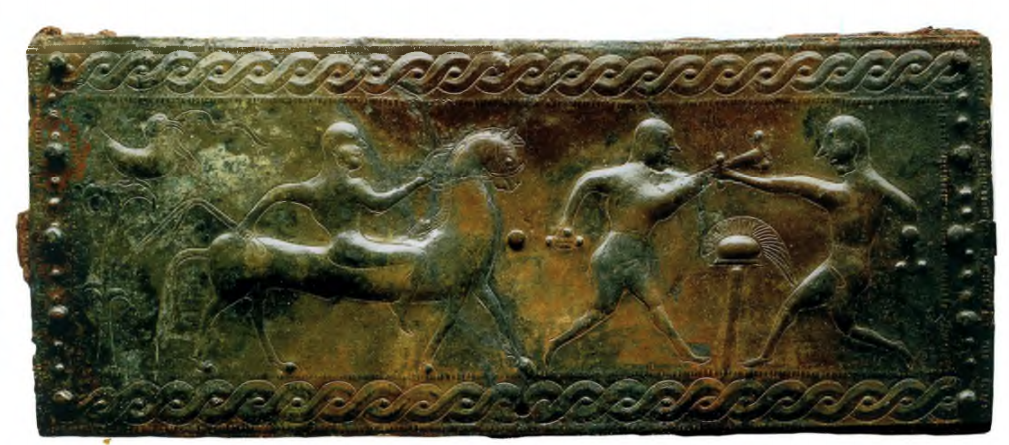Belenos?

Here we see the „dude dressed in white” being driven in a „bird chariot” with one bird pointing forward and the other backward…
Tutaj widzimy „faceta ubranego na biało” powożącego „ptasim rydwanem” z jednym ptakiem skierowanym do przodu, a drugim do tyłu…

Who is this „dude dressed in white”? Why is he driven in „bird chariots”? What is the symbol under the chariots? The Sun?
Kim jest ten „koleś ubrany na biało”? Dlaczego jest prowadzony w „ptasich rydwanach”? Jaki jest symbol pod rydwanami? Słońce?
Have a look at the drawings of the Vače Situla decorations.
Zapraszamy do obejrzenia rysunków z dekoracji Vače Situla.
The same dude we see being driven in the bird chariot, is also depicted sitting on a throne holding a scepter with two bird heads facing away from each-other…
Ten sam koleś, którego widzimy pędzącego w ptasim rydwanie, jest również przedstawiony na tronie, gdzie trzyma berło z dwiema ptasimi głowami odwróconymi od siebie…

Why?
Dlaczego?
Originally I thought that maybe this is somehow related to the two headed eagle dude found in Central Asia…This guy:
Początkowo myślałem, że może jest to w jakiś sposób związane z kolesiem dwugłowym orłem znalezionym w Azji Środkowej… Oto ten facet:



Which from the ground look like two headed eagles
Które z ziemi wyglądają jak dwugłowe orły

But maybe this Illyrian bird iconography has nothing to do with vultures. The bird definitely doesn’t look like a vulture. It is a raptor though. But which one…
Ale może ta iliryjska ikonografia ptaków nie ma nic wspólnego z sępami. Ptak zdecydowanie nie wygląda jak sęp. To jednak drapieżnik. Ale który…
Enters this cool dude: The short-toed snake eagle (Circaetus gallicus), a medium-sized bird of prey, found throughout the Mediterranean basin, into Russia and the Middle East, and parts of Western Asia, and in the Indian Subcontinent and also in some Indonesian islands…
Oto wkracza teraz ten fajny gość: orzeł wężowy z krótkimi palcami (Circaetus gallicus) – średniej wielkości ptak drapieżny, występujący w basenie Morza Śródziemnego, w Rosji i na Bliskim Wschodzie, w niektórych częściach Azji Zachodniej, na subkontynencie indyjskim, a także na niektórych indonezyjskich wyspach…

This eagle, as its name says has short toes 🙂 And eats snakes. I talked about this eagle in my post „Eagle calendar marker„…
Ten orzeł, jak sama nazwa wskazuje, ma krótkie łapy 🙂 I zjada węże. O tym orle pisałem w poście „Orzeł znacznik kalendarza”…

And in Europe, it is a migratory bird, arriving into Europe from Africa in Apr/May and leaving Europe for Africa in Sep/Oct…
A w Europie jest to ptak wędrowny, który przybywa do Europy z Afryki w kwietniu/maju i opuszcza Europę do Afryki we wrześniu/październiku…
Remember that snakes are solar animals. They are in our world when sun is in our world (hot part of the year) and they are in the underworld when sun is in the underworld (cold part of the year)
Pamiętaj, że węże to zwierzęta słoneczne. Są w naszym świecie, gdy słońce jest w naszym świecie (gorąca część roku) i są w podziemiu, gdy słońce jest w podziemiu (zimna część roku)

I talked about this in my posts „Enemy of the sun„, „The chthonic animal” and „Bactrian snakes and dragons„…Not just that, but mating season of European snakes take place at the beginning of summer, in Apr/May…
Mówiłem o tym w moich postach „Wróg słońca”, „Zwierzę chtoniczne” oraz „Węże i smoki baktryjskie”… Nie tylko to, ale okres godowy węży europejskich odbywa się na początku lata, w kwietniu/maju…

Which makes snake animal calendar marker for the beginning of summer…
Co sprawia, że wąż jako znacznik kalendarza zwierzęcego daje początek lata…
In Slavic mythology, dragon is „an old snake”…What this means is that dragon is the animal calendar marker for the late summer, the hottest part of the year…Which is by South Slavs called „Kresovi” (fires)…
W słowiańskiej mitologii smok to „stary wąż”… Oznacza to, że smok jest znacznikiem w zwierzęcym kalendarzu dla późnego lata, najgorętszej pory roku… Która jest przez Słowian południowych nazywany „Kresovi” (pożary). )…
Which is why in Slavic mythology, dragon, always breathes fire.
Dlatego w mitologii słowiańskiej smok zawsze zieje ogniem.
He is the symbol of destructive sun’s heat. I talked about this in my post „Dragon who stole rain„…
Jest symbolem niszczycielskiego żaru słońca. Mówiłem o tym w poście „Smok, który ukradł deszcz”…
This is also why in Slavic languages, the word for dragon „zmaj” is masculine form of „zmija”, snake.
Dlatego też w językach słowiańskich słowo smoka „zmaj” to rodzaj męskiej formy „zmija”, węża.
And why the oldest dragons, Mesopotamian ones, have snake heads. 7 snake head, for 7 hot, dry summer months…And the body of a lion…Cause Leo, Jul/Aug, is the hottest part of the year. The time of the fire breathing dragons..
I dlaczego najstarsze smoki, mezopotamskie, mają wężowe głowy. 7 wężowych głów przez 7 gorących, suchych letnich miesięcy… I ciało lwa… Bo Leo, lipiec/sierpień, to najgorętsza pora roku. Czas ziejących ogniem smoków…

I talked about this in my post „Seven headed dragon„…
Mówiłem o tym w poście „Siedmiogłowy smok”…
Anyway, back to the snake eating eagle…This eagle disappears from Europe when the the sun goes to the underworld, followed by snakes…And this eagle reappears in Europe when the sun returns from the underworld followed by snakes…
W każdym razie wracając do orła zjadającego węże… Ten orzeł znika z Europy, gdy słońce schodzi do podziemi, a za nim węże… I ten orzeł pojawia się ponownie w Europie, gdy słońce wraca z podziemi, a za nim węże…
And the only time you can see this amazing scene of eagle fighting snake is during summer and autumn…
Tę niesamowitą scenę walki orła z wężem można zobaczyć tylko latem i jesienią…
Now remember my pos „Leto„, about migratory birds and their significance in Slavic mythology?
A teraz pamiętacie mój post „Leto”, o ptakach wędrownych i ich znaczeniu w mitologii słowiańskiej?


And how they are directly linked with the departure of Jarilo (pronounced Yarilo), the sun god to the land of the dead in the autumn, and his return from the land of the dead in the spring?
I jak są one bezpośrednio związane z odejściem Jarilo (czyt. Jarilo), boga słońca do krainy umarłych jesienią i jego powrotem z krainy zmarłych na wiosnę?
To the point where the word leto (summer, year) can be derived from let (flight) of the migratory birds…
Do tego stopnia, że słowo leto (lato, rok) może pochodzić od let (lot) ptaków wędrownych…
Is it possible that the raptors depicted looking into opposite directions are migratory snake eagles? If only there was an Illyrian artefact, from the same area and the same time period, showing a raptor with a snake in it’s beak…
Czy to możliwe, że przedstawione ptaki drapieżne patrzące w przeciwnych kierunkach to wędrowne orły wężowe? Gdyby tylko istniał iliryjski artefakt z tego samego obszaru i z tego samego okresu, przedstawiający raptora z wężem w dziobie…
Now have a look at this: a (ritual) boxing match over a helmet depicted on the Vače Situla.
A teraz spójrz na to: (rytualny) mecz bokserski nad hełmem przedstawiony na Vače Situla.

Now have a look at this: Belt buckle (Illyrian or Etruscan or…) from Magdalenska gora. From this amazing paper „Podobe zivljenja in mita„… It depicts the same (ritual) boxing match over a helmet depicted on the Vače Situla. But, in the top left corner, there is a bird of pray with a snake in its beak…
A teraz spójrz na to: Klamra do paska (ilirska lub etruska lub…) z Magdaleńskiej Góry. Z tej niesamowitej gazety „Podobe zivljenja in mita”… Przedstawia ten sam (rytualny) mecz bokserski nad hełmem, co na Vače Situla. Ale w lewym górnym rogu znajduje się modlitewnik z patkiem i z wężem w jego dziobie…

So I think I am right about the identity of the raptor from the Vače Situla…
Myślę więc, że mam rację co do tożsamości drapieżnika z Vače Situla…
So who is this dude dressed in white, on an Illyrian situla, being driven in the chariot with two birds pointing in two opposite directions and holding a scepter with with two birds pointing in two opposite directions (departure and return of migratory birds)??? I wonder…
Kim więc jest ten koleś ubrany na biało, na iliryjskiej situli, prowadzący rydwan z dwoma ptakami skierowanymi w dwóch przeciwnych kierunkach i trzymający berło z dwoma ptakami skierowanymi w dwóch przeciwnych kierunkach (odlot i powrót ptaków wędrownych)? ? Zastanawiam się…
No suggestions?
Brak pomysłów?
Well Belenus (Belinus and Bellenus), a sun god from „Celtic” mythology, whose name can be derived from „bel”, Slavic word for white, making him the equivalent of the Slavic Belbog (White god)???
Otóż jest to Belenus (Belinus i Bellenus), bóg słońca z mitologii „celtyckiej”, którego imię można wywieść od „bel”, słowiańskiego słowa oznaczającego biel, co czyni go odpowiednikiem słowiańskiego Belboga (Białego Boga)???
„The historically favoured interpretation of the name is a „bright/shining one,” from a Proto-Indo-European root *bhel (to shine)”
„Historycznie preferowana interpretacja nazwy to „jasna/błyszcząca”, wywodząca się z praindoeuropejskiego korzenia *bhel (błyszczeć)”
Belenus was associate with horses…Just like Svetovid, Slavic sun god who was also associated with horses. White horses, which were kept in his temples…I talked about this in my post „Horseman„…
Belenus kojarzył się z końmi… Podobnie jak Światowid, słowiański bóg słońca (Światła Świata – CB), który również był związany z końmi. Białym,i końmi, które były trzymane w jego świątyniach … Mówiłam o tym w poście „Jeździec”…

The reason why solar deities are linked to horses is because mating of wild horses begins in Apr/May…At the beginning of summer. And it peaks during summer solstice…Which is why horse was used as animal calendar marker for the beginning of summer and for summer solstice…I talked about this in my posts „Unicorn” and „Trojan horse„…
Powodem, dla którego bóstwa słoneczne są powiązane z końmi, jest fakt, że ruja dzikich koni rozpoczyna się w kwietniu/maju… na początku lata. A szczyty osiąga podczas przesilenia letniego…Dlatego koń był używany jako znacznik kalendarza zwierząt na początek lata i przesilenie letnie… Mówiłem o tym w moich postach „Jednorożec” i „Koń trojański”…
This is also why horses usually pull sun chariots…
Dlatego też konie zwykle ciągną rydwany słoneczne…

So is the guy in white, driven in a horse pulled chariot, Belenus (Belbog) = White god, Sun…
Tak jak facet w bieli, powożący rydwanem konnym, Belenus (Belbog) = Biały bóg, Słońce…
źródło: https://oldeuropeanculture.blogspot.com/2021/11/belenos.html
